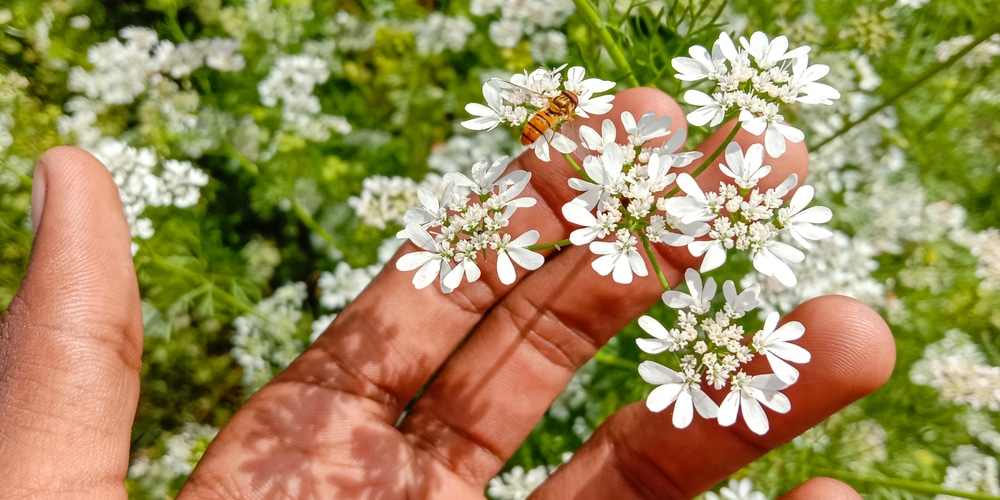Cilantro (Coriandrum sativum) is an aromatic medicinal plant that finds its way into many recipes. Its life cycle is pretty straightforward. In brief, the seed turns into a seedling, which makes the fresh leaves we use in the kitchen. Then, the cilantro plant flowering produces new seeds.
How to stop cilantro from bolting? When summer arrives, the cilantro is ready to enter its vegetative stage at full power. So, it makes beautiful, ready to use, green leaves and gets tall. If the plant gets even taller, it will inevitably bolt and bloom. So, if you want to prevent flowers from popping out, you have to trim the top parts!
Why Does Cilantro Flower?

Cilantro is an annual plant also known as coriander. So, it has a short life span that only serves to reproduce itself. On the other hand, the seeds it makes (coriander) have a hard shell to protect the seedling until the time is right to germinate next year.
Cilantro reacts to external factors like drought, frost, and temperature change like other annuals. But sometimes, climate fluctuation causes them to bolt prematurely. The early cilantro plant flowering can thus be the result of poor growing conditions or rapid changes. From an evolutionary perspective, it is a necessary countermeasure.
Generally speaking, cilantro starts producing flowers when the temperatures rise above 50F (10C). The sweet spot for a healthy plant to thrive and make flowers is between 50 and 85 F.
As a member of the Apiaceae family, cilantro makes a humble inflorescence. The peduncles spread from a central area and branch up like an umbrella, creating umbels that receive all the plant’s attention and energy. The flowers are easy to spot, and the good news is that you can trim the cilantro plant to promote growth.
How To Stop Cilantro From Bolting
The main idea is to nip the flowering stem down at its base. Of course, cutting the part of the cilantro plant flowering will send more energy back down towards leaf growth. But it is not a definitive solution.
Once the plant start bolting, it will not go back to its vegetative stage that easily, if at all. So, a better plan of action is to trim your cilantro plant regularly. In other words, to harvest it as soon as it makes new sets of leaves.
As long as you leave at least one or two nodes from the central stem, you will get new growth from the plant. Mowing your cilantro plants will guarantee continual harvest and fresh leaves for your food.
Succession growing is another strategy you can use to have always more cilantro you can possibly need. By planting several seeds at different times and weeks apart, you will have more plants to harvest while the ones you cut regenerate.
How To Trim Cilantro Plant After It Flowers
- First, locate the shoot that is producing flowers. You want to trace the cilantro plant flowering part back to its node.
- Check the first node on the branch. (Or central stem, if the only umbel is on top.)
- Take a pair of scissors and disinfect them with rubbing alcohol or other suitable disinfectants. (As an option, you can use your fingers and twist the stem until it breaks.)
- Cut at the base of the flowering stem at approx 1/4 inches above its node.
- Prune off any other flowering stem until the plant has none left.
Can You Eat Coriander Flowers?
Yes, you can still use bolted cilantro for cooking delicious recipes. Or use it raw as a garnish. The flowers have the same flavor as regular cilantro and are safe to eat. All parts of this plant are edible!
Of course, you might want to check the cilantro plant flowering buds for seeds first. You can also wait for the fruits to form a little more and let them dry to grind them. Coriander is a spice with potential health benefits, after all!
Will cilantro grow back after cutting the edible flowers? Sadly, the cilantro plant still wants to end its life cycle like it is supposed to. So, it will keep trying to make new flowers and seeds for you to harvest. But as the temperature drops, the plant will die.
